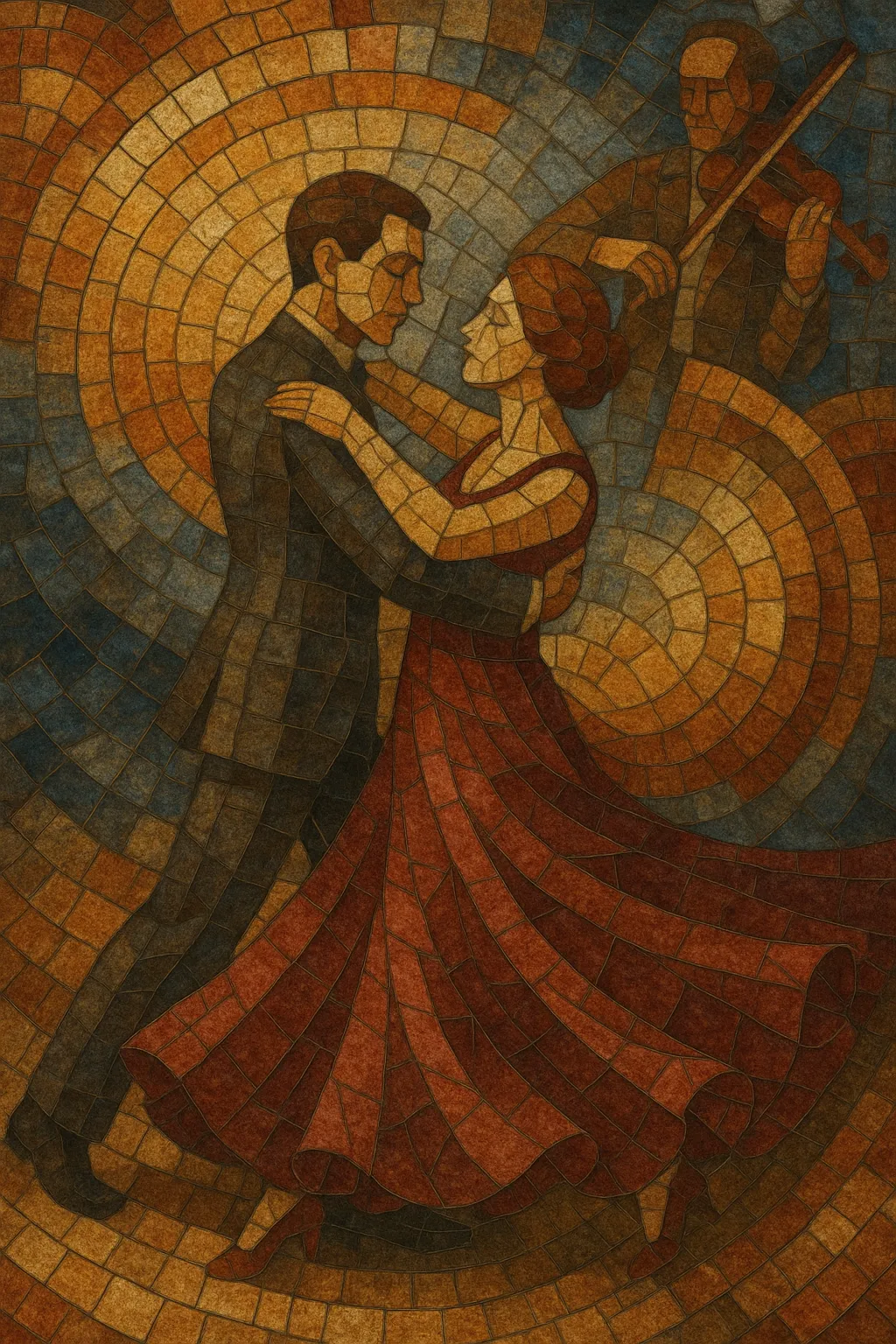Waltz is a dance-music genre in triple meter, most commonly in 3/4 time, marked by a strong accent on the first beat and the characteristic “oom–pah–pah” accompaniment (bass note followed by two chords).
Emerging from Central European folk dances and adopted by urban salons, the waltz spans both functional dance repertoire and concert pieces for piano or orchestra. Tempos vary by style: the Viennese waltz is fast and flowing, while the slow/English waltz is measured and lyrical. Melodies are typically long-breathed and cantabile, with 8- or 16-bar phrases and frequent modulations to closely related keys.
The genre is culturally tied to Vienna and the Habsburg lands, where composers such as the Strausses and Lanner helped codify its form, but it has since permeated ballroom traditions, art music, folk repertoires, film, and popular music worldwide.
The waltz coalesced in the late 1700s across German-speaking Central Europe, evolving from rural couple-dances such as the Ländler and Deutscher. Its defining traits—close-hold couple turning and music in triple meter with a strong downbeat—distinguished it from earlier courtly dances like the minuet. By the 1780s–1790s, the waltz was spreading from village festivities into urban ballrooms.
In Vienna, dance orchestras and salon culture turned the waltz into a sensation. Josef Lanner, Johann Strauss I, and Johann Strauss II standardized the multi-part dance set: a brief introduction, several contrasting waltz numbers (each in 16- or 32-bar strains), and a coda. The fast, whirling Viennese waltz (typically around 150–180 bpm) became synonymous with the city’s social life.
Parallel to ballroom use, composers adapted the waltz for concert performance. Schubert wrote charming waltzes for piano; Chopin elevated the piano waltz to virtuosic and poetic status; orchestral waltzes by the Strausses, Waldteufel, and later Tchaikovsky entered the symphonic and theatrical repertory. The “oom–pah–pah” became a universal signifier of graceful motion and romantic nostalgia.
The waltz entered diverse traditions—Cajun and country waltzes in North America, French musette waltzes, and numerous folk and ballroom variants. In competitive ballroom, the slow/English waltz (around 84–96 bpm) emphasized rise-and-fall, smooth lines, and sweeping rotation, while Viennese waltz preserved the brisk, continuous turns.
Waltz remains central to social dance, classical concerts, and film/television scoring. Its triple-meter lilt and strong first beat persist as a shorthand for romance, elegance, and swirling movement, influencing genres from musette and operetta to country and schlager.


